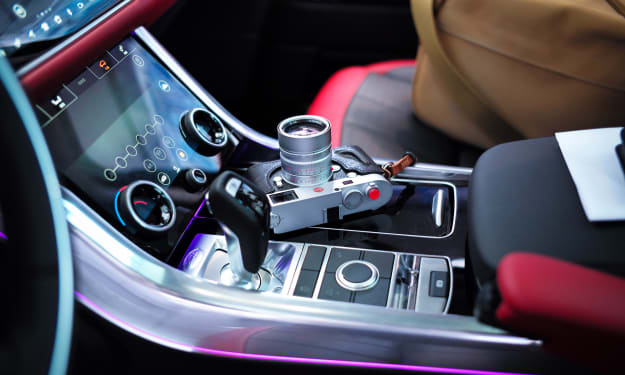Will We Ever See Steam-Powered Cars?
Steam-powered cars were once state-of-the-art, and the past might just be the wave of the future.

During the Victorian age and throughout the early 20th century, steam-power was the crowning glory of the transportation industry. Although trains and boats powered by steam were the stars of the show, steam-powered cars were on the verge of becoming the go-to mode of personal transport. Alas, time and circumstances prevented them from reaching their full potential at the time. As you know, internal combustion engines overtook the world around the same time, which eventually rendered external combustion engines obsolete. For the longest time, steam carriages, steam engines, and other steam-powered vehicles were nothing more than nostalgic novelties. The fact is that steam power has a number of advantages over external combustion, so the subject of bringing back steam-driven personal and commercial vehicles pops up often. Is it a good idea? Does it even hold any weight? Well, you can't decide that without a comprehensive list of pros and cons.
The Advantage of an Ageless Automobile
By most accounts, Ferdinand Verbiest is technically responsible for designing the first steam-powered car. He doesn't get much credit for it, however, because his design never came to fruition—it was just a blueprint—and, anyway, it was little more than a toy for the Imperial royal court in China. Still, his engineering plans mean that steam-powered vehicles were a possibility as far back as 1672. By 1769, Nicolas Joseph Cugnot built a steam carriage, which counts as the first steam-powered automobile. From there, steam power took on a life of its own. The point? Clearly, the external combustion system has been time-tested. It's paid its dues, as it were.
The Manufacturing Issue
The knowledge of how to build steam-driven automobiles is there. Not understanding the mechanics of steam combustion isn't an excuse. One reason why engineers and innovators hesitate to bring back steam-powered vehicles is the cost of manufacturing, though. One thing you might not know about Henry Ford is that he almost single-handedly brought about the decline of steam as a power source, not just because of his innovations with hand cranks, internal combustion engines, and the Model T, but also because of his clever use of assembly lines to manufacture new ICE vehicles at a faster rate. Thanks to him, people had mostly given up on steam-driven vehicles by the early 1900s.
Need for Speed

Image via Unsplash
Critics worry that steam-powered cars can't possibly run fast enough for modern times. That's actually a ludicrous worry. Fred Marriott broke the record for land speed back in 1906, driving a Stanley Steamer—a popular steam-driven automobile. He hit 127 miles per hour in a car powered by steam. It took four years for anyone to break his record, although Marriott held the steam-powered land speed record until 2009—over 100 years! In other words, steam cars have no trouble reaching acceptable speeds. The freeways won't be choked with slow-moving vehicles if steam-power makes a comeback.
Failing Fossil Fuels and Steam-Powered Cars
It isn't hard to understand why the thought of steam is back in vogue as a power source. Internal combustion engines use up too many fossil fuels. Automobiles are quickly depleting the planet. Hybrid and electric cars represent a change for the better, but they're not perfect, either. In contrast, steam-powered cars are about as close to perfect as the automotive industry can possibly get.
Bullied by Big Oil
Oil companies once played a hand in the demise of steam-powered vehicles. Between the development of the cylinder engine and the innovations of men like Ford, Big Oil recognized the potential to capture the automotive industry as a whole. You can bet that Big Oil takes notice anytime someone seriously discusses the possibility of returning to steam-powered engines. No doubt the industry would put up a fight to end the competition. There's too much money to be had when you force people to gas up their cars to get anywhere.
Innovations in Fuel Efficiency

Image via Pexels
During the early part of the 20th century, ICE vehicles outpaced steam-powered vehicles because the internal engine was much more fuel efficient. That's why some people evince skepticism today when pressed about the possibility of a steam engine comeback. They don't believe that external combustion engines will help save the planet, and they aren't convinced that steam-driven automobiles will leave a smaller carbon footprint. New innovations in the construction of steam cars say otherwise, however. For example, an automotive company called Cyclone Power Technologies designed a water vapor-powered car that heats and cools within a close-looped system. The steam is more of a liquid than a gas because it reaches extremely high temperatures, which powers the engine to an intense degree. Flash boilers have the potential to change the scope of steam engines. Today's technology means that a small steam engine can effectively take up the same amount of space as an internal combustion engine.
Explosion Anxiety
Early steam cars exploded. There's no way to dress up that unfortunate fact from the history of steam-powered cars. It occurred enough times that today, even innovative automakers worry about the possibility of introducing steam-powered cars to the masses. Laboring under the misconception that steam-driven vehicles created today would still need huge boilers, they assume that explosions are a given. When combined with the powerful pressure that runs steam-powered engines, the issue is understandable but groundless.
An Easy Drive
Driving a steam-powered car is simple. The boiler needs time to get hot, which takes a few minutes, but as you now know, that doesn't affect how quickly it reaches top speed. Traditional steam cars didn't have a clutch, nor did they need a gearbox. The steam creates all the consistent pressure necessary to power the vehicle. With today's technology, developing a steam car that requires minimal effort to drive certainly wouldn't be a problem. Modern models would also be much lighter than their forebears. Where an old steam car weighed an unwieldy amount due to its large boiler, a vehicle created today would be comparably lightweight and uncomplicated.
Ending Emissions

Image via Unsplash
Not surprisingly, steam-powered vehicles don't produce many emissions. The high temperature of the steam burns off nearly all the emissions. Steam cars have the potential to burn cleaner than hybrids, but they would also produce fewer emissions than electric cars, even the best electric cars, which still rely on some sort of fossil fuel.
Eroding Market Resistance
The problem with introducing steam-powered vehicles into the market is resistance from consumers. If people won't buy it, then no one's going to sell it. That's basic supply-and-demand. Worrying about that is still premature, as no one has successfully stepped up as the new incarnation of the Stanley Motor Carriage Company and, as yet, there's no replacement for the Stanley Steamer—at least not in the United States. The perfect design, the right marketing, and the general benefits of a steam-powered engine could ultimately convince buyers to opt for a cleaner, greener car. After all, they were wary of hybrids and electric cars, too.
A Question of Practicality
The question becomes, are steam-powered cars practical for the modern age? Market resistance and the real possibility of pricing a steam-powered model out of a viable market are real worries, but it's possible to eliminate both risks. At that point, the benefits may well outweigh any potential disadvantages.
About the Creator
Dr. Ethan Levi
He is a published writer with a doctorate in philosophy who challenges literally everything and everyone. Dr. Levi strongly identifies with punk music and despises elitism. He has an affinity for flannel.






Comments
There are no comments for this story
Be the first to respond and start the conversation.